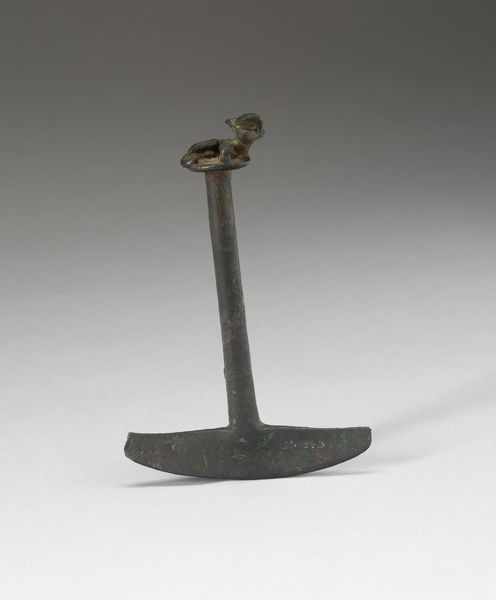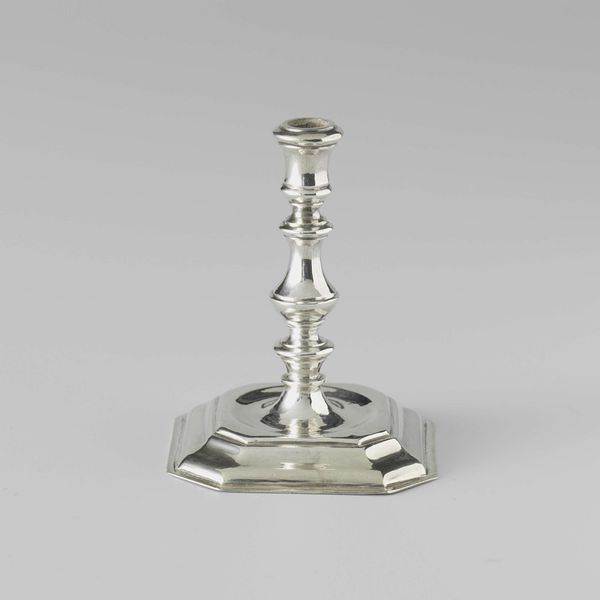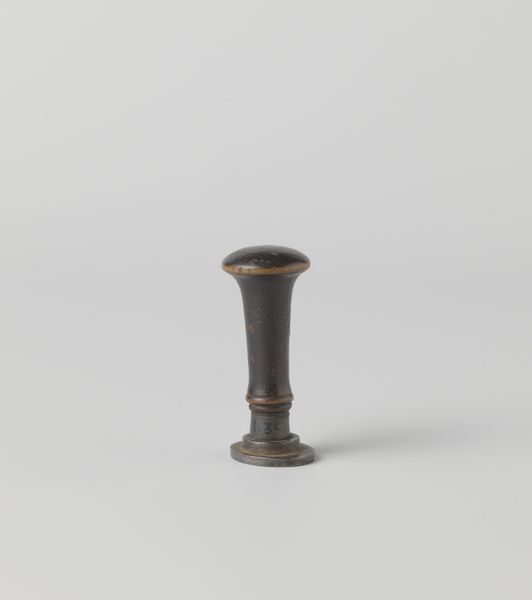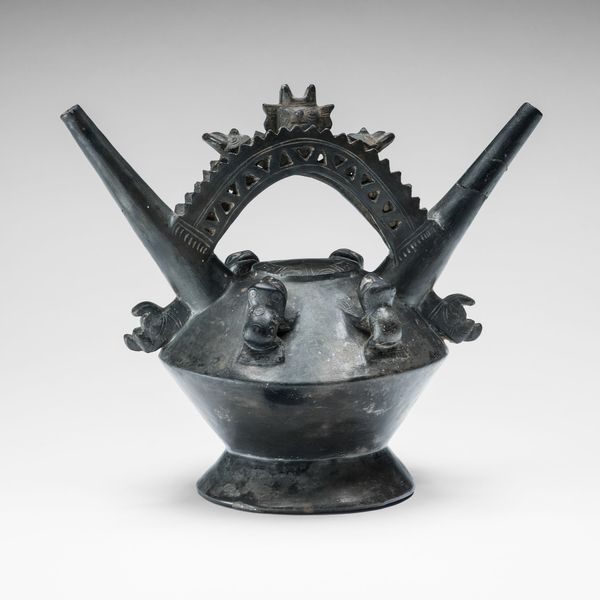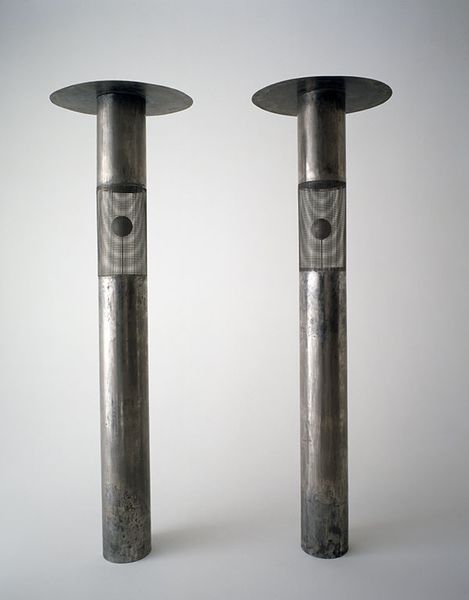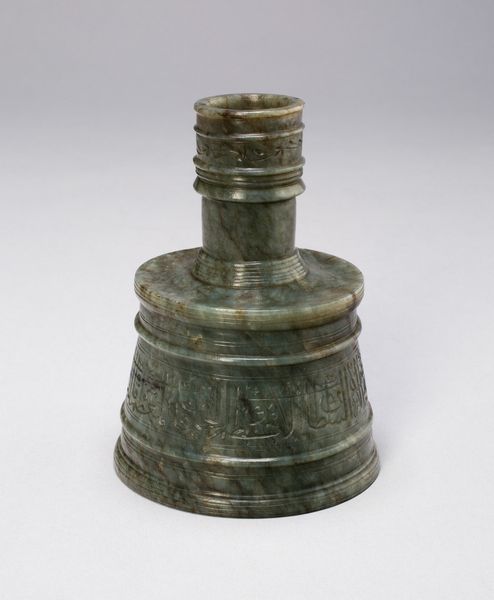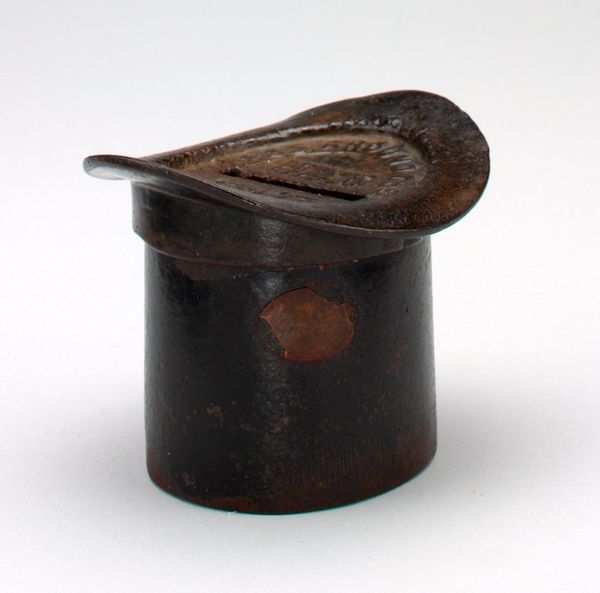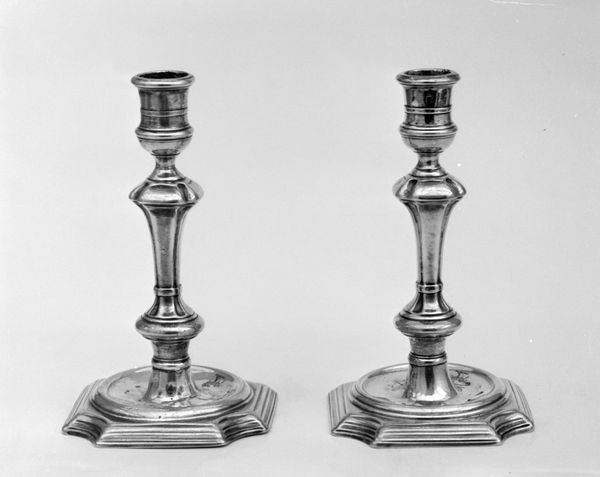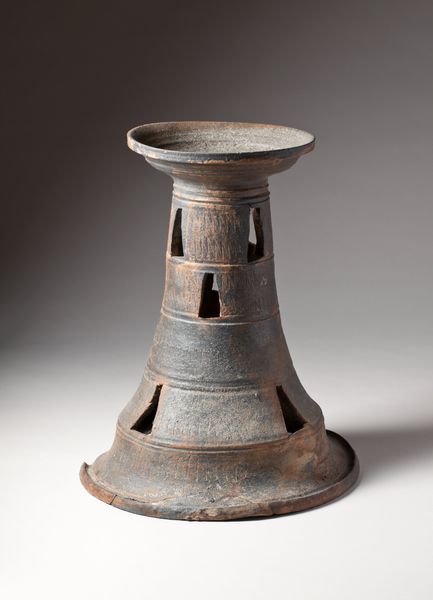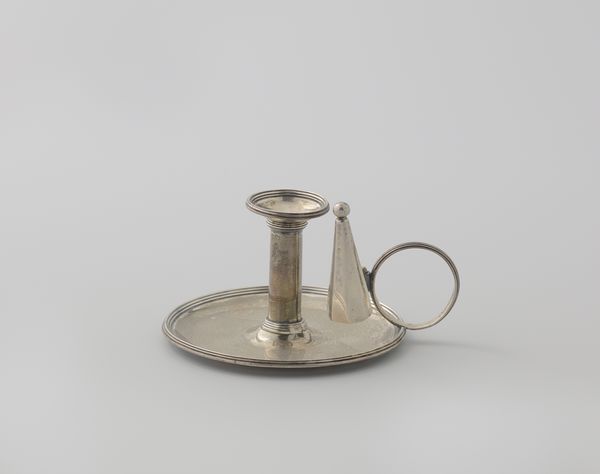
ceramic
#
ceramic
#
figuration
#
vessel
#
indigenous-americas
Dimensions: 21.3 × 20.2 cm (8 3/8 × 7 15/16 in.)
Copyright: Public Domain
Curator: The ceramic "Double Vessel with a Foot-Massage Scene" hails from the Chimú culture, dating perhaps between 1200 and 1450. It’s currently held here at the Art Institute of Chicago. Editor: My first impression is how unusual this is! It’s almost whimsical. The dark, almost somber tone of the ceramic juxtaposes oddly with this intimate scene of foot massage playing out on top. Curator: The double vessel form itself speaks to duality – the interconnectedness so important in Andean cosmology. Two chambers, linked but separate. Vessels in Chimú society had functional and symbolic purpose within ritual contexts and ancestor veneration. Editor: The act of foot massage, rendered so literally, I wonder about its socio-political context. Was this purely a domestic scene? Or were foot massages imbued with status or perhaps religious significance for the Chimú? Was this displayed prominently or used privately? Curator: Considering it embodies ideas related to service, comfort, even reverence, I would hazard a guess it held importance. Vessels like these reveal societal hierarchies; some researchers think high-status individuals are often the subjects of artistic depiction. It's suggestive of the social dynamics that were deemed important enough to immortalize in art. The dark color relates to associations between black ceramics and agricultural fertility. Editor: That’s a key point – it is about creating visual meaning. Is the person giving the massage necessarily of lower status than the receiver? Or might it represent care and kinship, offered irrespective of rank? Perhaps the duality of the vessel also reflects different interpretations layered by later societies that interacted with this object. Curator: Indeed. Foot massages could signify health and well-being, luxury, or a more profound social ritual. Even ancestor veneration often combines social rituals with personal health. These intertwined figures probably signify those overlaps. Editor: Ultimately, objects such as this challenge us to consider our own cultural biases when interpreting art from vastly different worldviews. Curator: Exactly, these artifacts allow us to explore humanity, as it was and perhaps how it always could be. Editor: The human-centered touch, indeed, resonates across time and place.
Comments
No comments
Be the first to comment and join the conversation on the ultimate creative platform.

